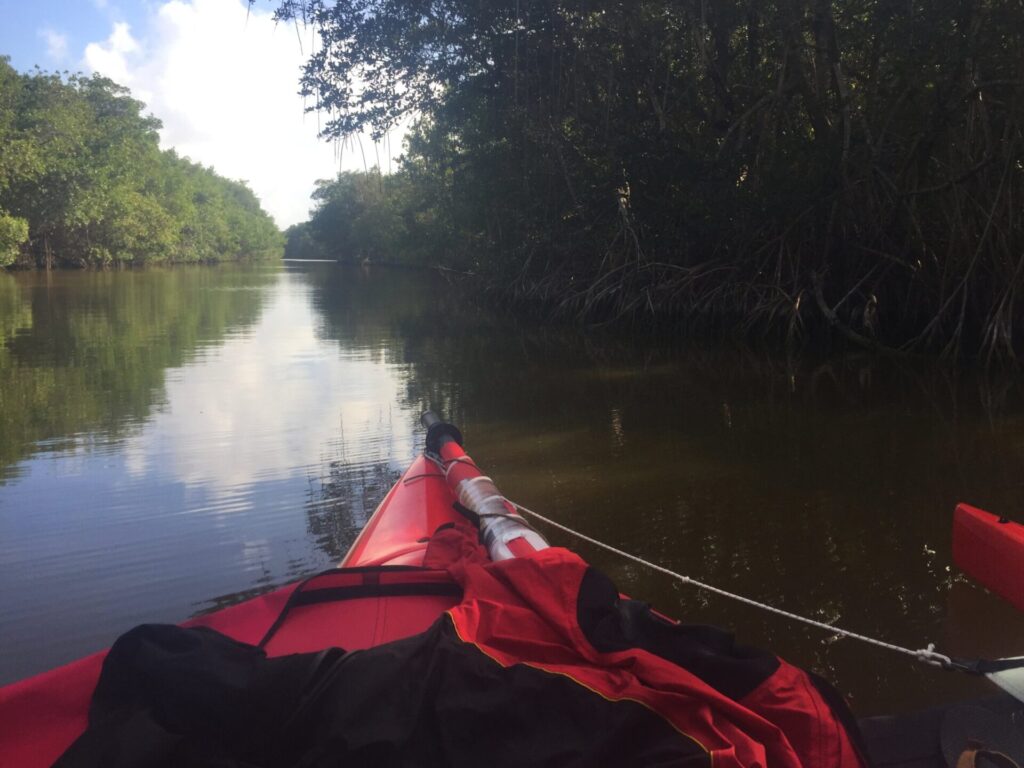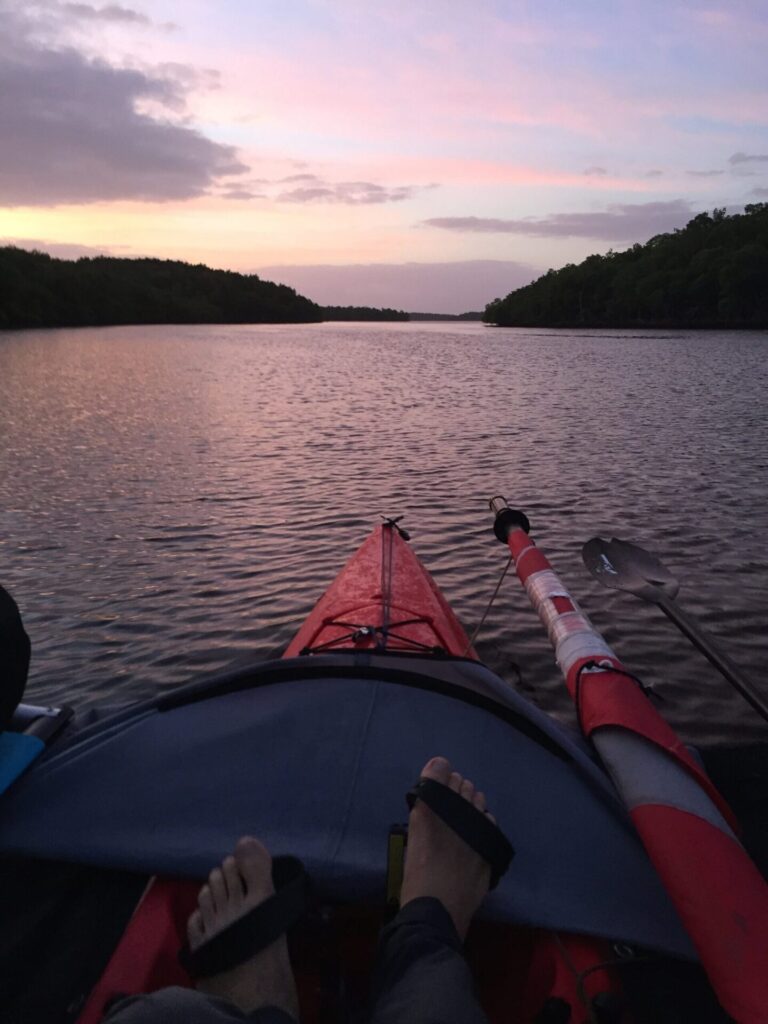Home Story Conquering The Everglades
Conquering The Everglades
Feature type Story
Read time 5 min read
Published Jan 05, 2020
Author Jim Czarnowski
Photographer Jim Czarnowski
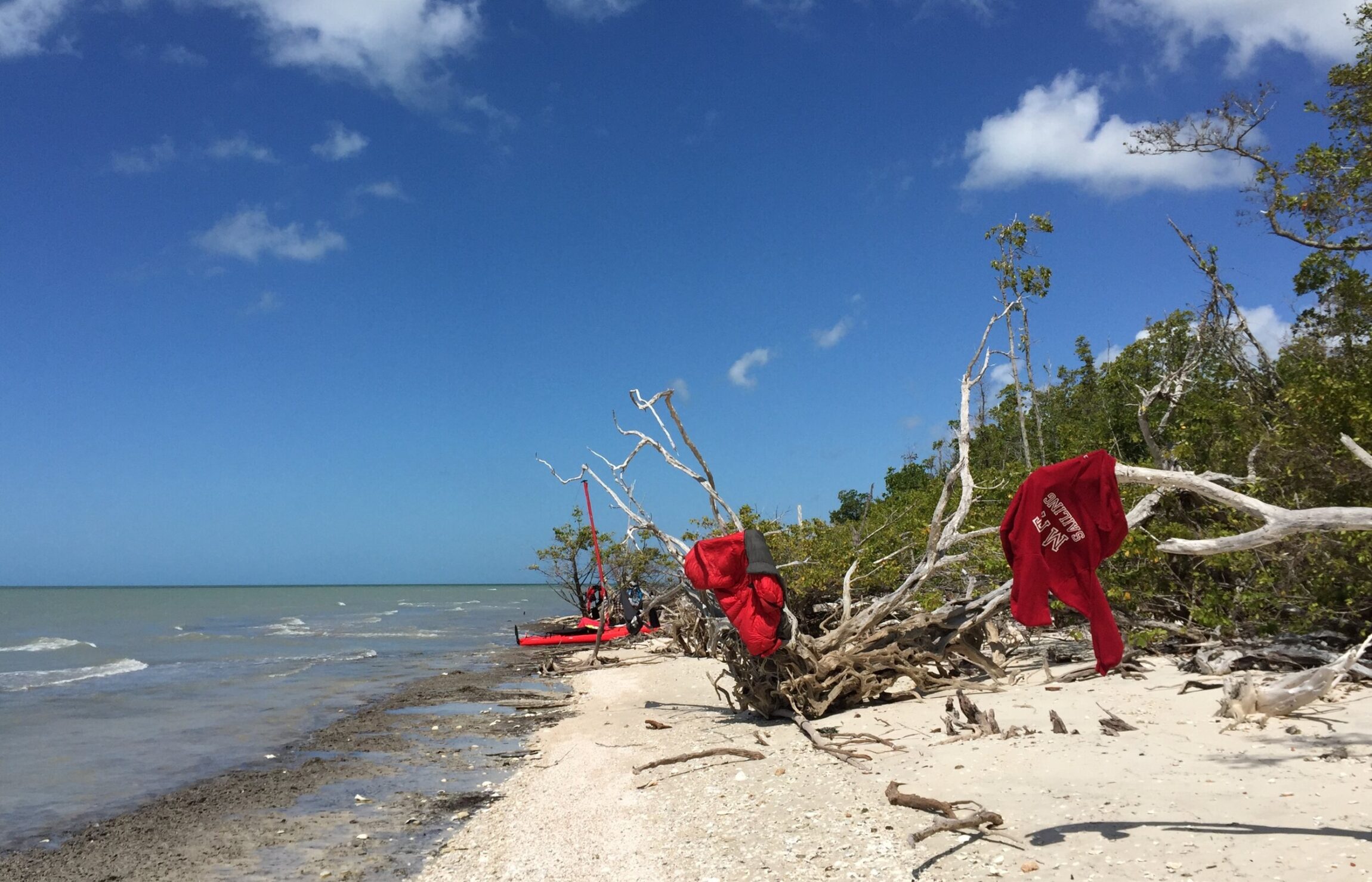
When an acquaintance who was many years my senior challenged me to join him in a 350 mile race through the Everglades on a sailboat, I thought he was crazy. When he told me it was unsupported, and that only a handful of heroes cross the finish line, I knew he was crazy.
That is, until I found myself entering the race. Not long after, I was contemplating just how crazy it would be if I did it in a Hobie prototype. The one-of-a-kind ‘sailing yak’ I had in mind didn’t even exist yet, but as Hobie’s engineer guy there was no better way to put her to the test!
The fabled race is called The Everglades Challenge. It consists of about 200 hare-brained entrants, with a maximum of eight days to cross the finish line, though the large majority of those entrants don’t come close.
The worthy prototype with which I chose to make my journey on this particular venture has since been named the Mirage Adventure Island, which is an epic sailing/pedal kayak hybrid. I knew from the start that this should be…well, interesting.
With a bit of perfectly placed dark humour, there is a section of the race dubbed “The Nightmare.” It’s optional, and I presume at this point I don’t need to tell you whether or not I opted in.
One of the tricky parts of The Nightmare is timing the tide correctly to ensure the water is high enough to allow a boat to float over the mess of roots and tree branches. It’s narrow, it’s dense, and it’s nearly impossible to navigate.
In this particular instance, high tide was scheduled for midnight. After a tasty Tuna Helper dinner and four hours of sleep, I served myself up a piping hot instant Starbucks coffee double shot, for the extra early wakeup call, and set out. The Nightmare, at first, was wide open and breezy. I was floating along at three to four miles per hour, well above the logs that might’ve otherwise obstructed the MirageDrive, the pedal fins beneath the boat.
Lost and paralysed in the horror of my own thoughts, I heard the sound of my own voice yelling for help.
An hour later, reality struck. The trail started to narrow. Clearance worsened and I found myself ducking and pushing branches away as I passed through. I checked my GPS to see how I was getting on, but oh no…no signal. The swamp canopy had me locked out from receiving and sending any sort of communication.
A strong caffeine buzz kept me bending, squeezing, but more and more I was resorting to my Leatherman saw to trim back impenetrable roots. Soon I was getting out of the boat, balancing on slippery roots and logs to clear obstructions so the boat would pass, before crawling my way back in. But my luck soon ran out and I slipped into the water, drenched head to toe.
At this point, unwilling to believe that the route was this impassable, I figured I must have made a wrong turn. I made the hard decision to turn around. I got lost multiple times trying to backtrack and at this point all I could focus on was the sound of rushing water and the sobering realisation that the forest was draining. The tide was dropping and I knew I’d soon find myself in what one might call an emergency situation.
Panic. Exhaustion. Mosquitos. Sweat. Slime. Mud. More mosquitos. Defeat.
I took a deep breath. Reluctant acceptance set in. I recognised I wasn’t going to go anywhere anytime soon. My next best step was to funnel my little remaining energy into planning an escape from this predicament. I estimated I had about ten hours before the next high tide, so I’d better get comfortable.
I dragged my boat to a balanced spot where I could set up my tent. I stripped off my drenched clothes and hunkered down in my sleeping bag to warm up and have a bite to eat. Lonely, negative thoughts began to torture me. What if the next tide wasn’t high or long enough to see me out of this? What if I can’t get signal to send an SOS? How long will my food rations last? Will my eight-month pregnant wife be okay? Lost and paralysed in the horror of my own thoughts, I heard the sound of my own voice yelling for help. “I’m stuck! I’m lost! Help!” There was no reply, besides the eerie glare of countless alligator eyes watching me.
They say even the darkest hour only lasts sixty minutes. I had no choice but to finally swallow my fears and activate the strategic side of my brain. I had no control over the functionality of my GPS or the tide, so I channeled my energy into what I could control. I recognised that navigating my way out would take longer than the next high tide allowed, so I set out on foot to familiarise myself with my surroundings in hopes of being prepared for a quick escape when the tide rose again. With an inoperable GPS and a role of toilet paper, I set out on all fours, like some kind of swamp monkey.
Half sliding, half climbing, with a touch of swinging, jumping and splashing, I succeeded in proceeding about 100 yards, when I heard a rustle back near my boat. Raccoon. It was going for my food and water bladder. I scurried back, scared it off, and secured my essentials inside the boat. Such a small mistake could’ve cost me my food and water, and perhaps my life.
I returned to the task at hand, leaving my cookie-crumb toilet paper along the way to mark my tracks. After a slow jaunt of hanging from branches, balancing on slimy logs, and wading through chest deep water, I finally spotted a handful of freshly cut branches. I’d found the way out.
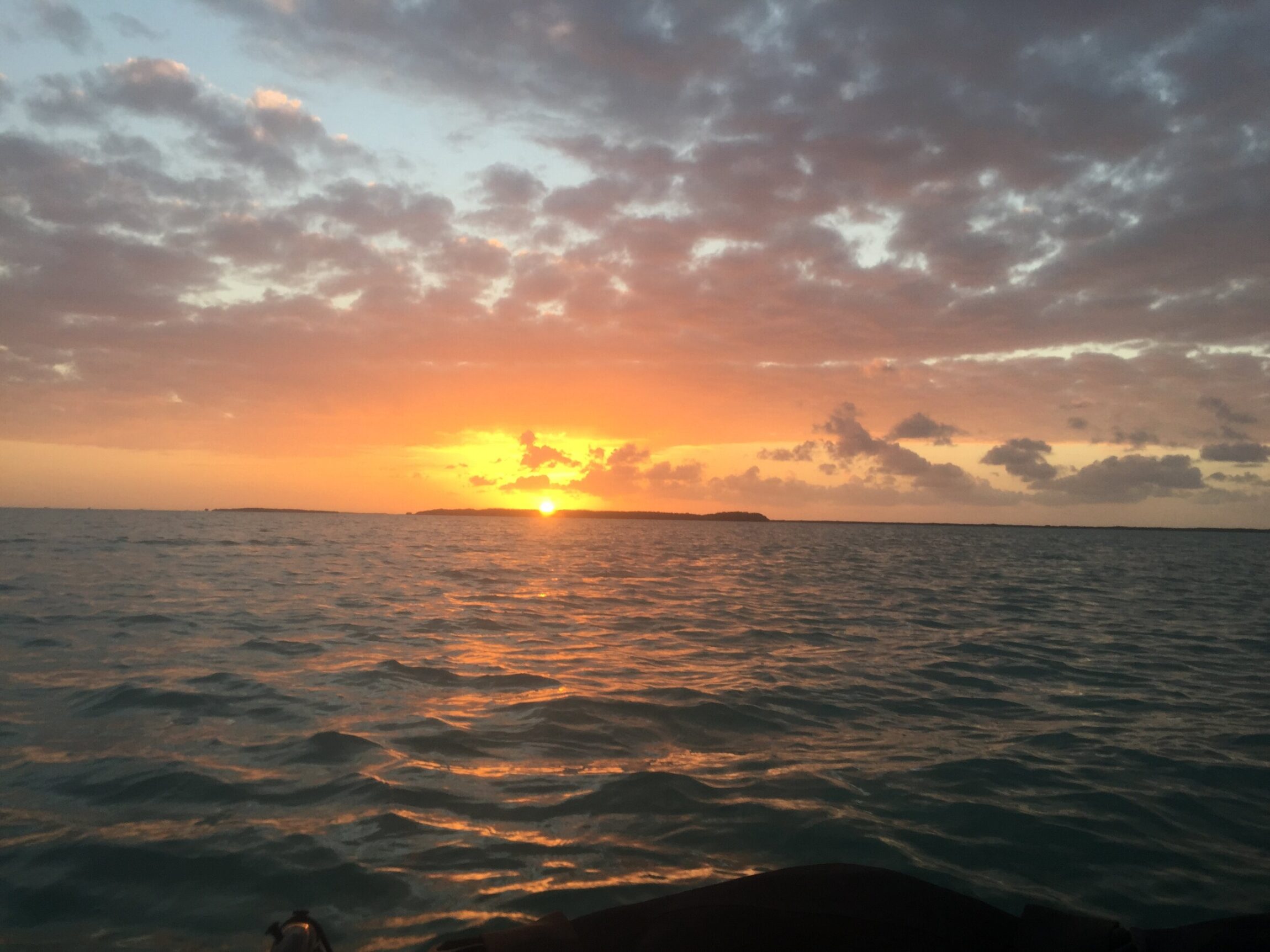
It took several hours to follow my toilet paper trail back to the boat. I estimated my rate of travel was about one fourth of a mile per hour. Calling foot travel through the swamp “slow” would be a colossal understatement. So, upon reuniting with my boat, I did the only thing I knew to do, and listened to my favourite Ziggy Marley album, revelling in my small victory.
Soon enough, the water had crept its way just far enough up the mangroves to deem it go-time and I set out determined to find the correct route and complete the race. A hard-earned hour passed, and things started to look a little less like a terrorised jungle and a little more like the open path I’d deviated from before. After a wild, life-threatening tear through the swamp, I was back on track, and ultimately finished the race with a story I’ll never forget, and a few lessons, undoubtedly learned the hard way.
1: The wilderness doesn’t care if you live or die. Your survival is up to you.
2: Plan as if your electronics will fail – bring extra toilet paper.
3: When in survival mode, the importance of listening to your favourite album cannot be underestimated.
4: The Hobie Adventure Island prototype made one hell of a vessel for the trip. About one-third of race entrants use it now.
5: And last but not least, when an old guy challenges you to race him through the Everglades on a sailboat, you better do it and you might just make a best friend out of him along the way… in my experience, at least.
Don’t miss a single adventure
Sign up to our free newsletter and get a weekly BASE hit to your inbox
You might also like
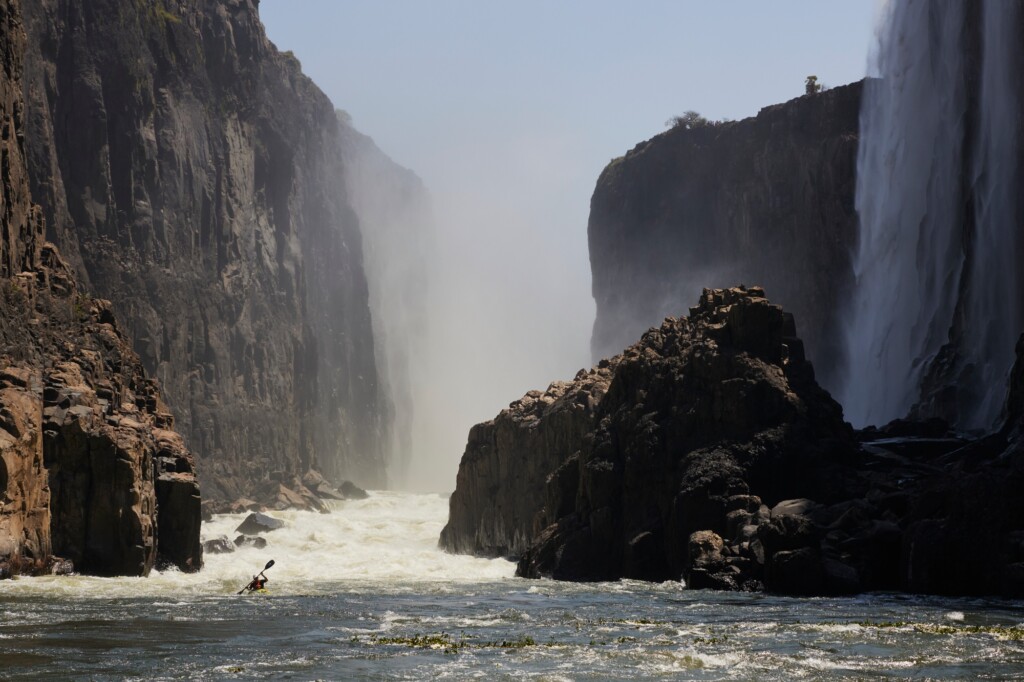
Story • Ed Smith • Jul 26, 2023
Victoria Falls: The Smoke That Thunders
Exploring a personal relationship with the Zambezi and its uncertain future by kayak
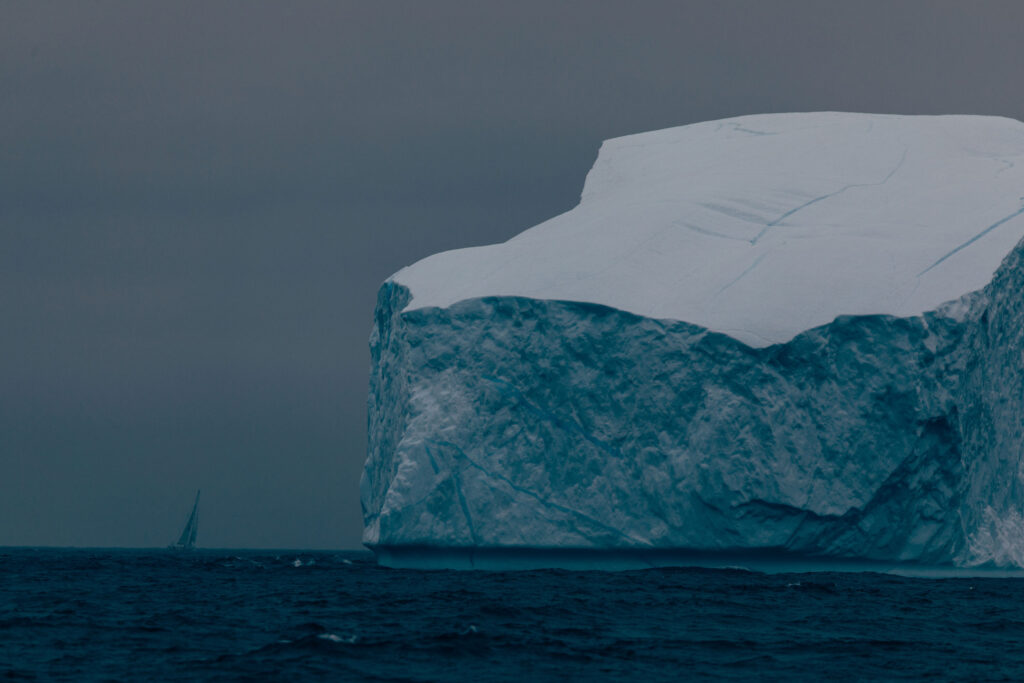
Story • SKIRR Adventures • Jan 10, 2023
Among Ice Giants
A 4,820 nautical mile sailing expedition to some of the most remote places on Earth
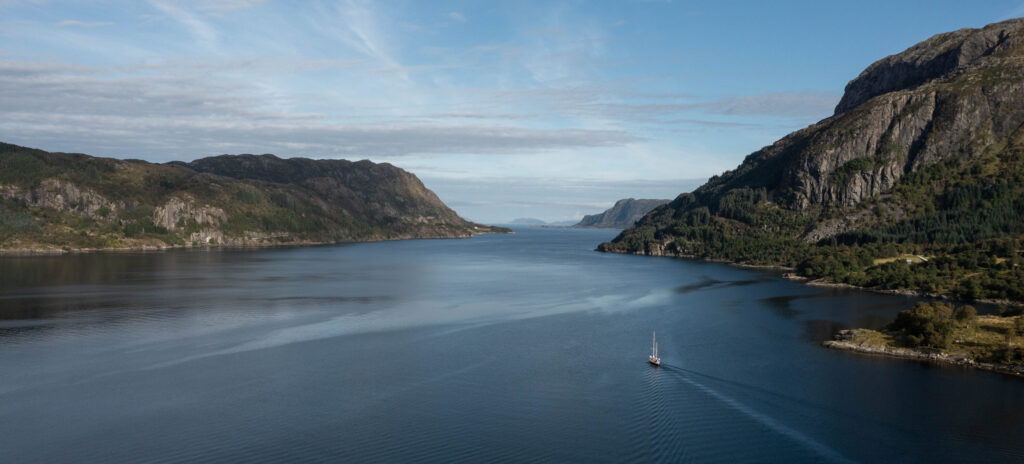
Story • Nino Mazzone • Dec 08, 2022
North on The Wind
A sailing expedition to discover the coastal mountains of Arctic Norway
